THE HISTORY
Alembic, a company over 110 years old, started with humble beginnings to manufacture pharmaceutical products in the city of Vadodara. In over a century the company has grown into one of the largest players in the field of pharmaceuticals in India and also exports its pharmaceutical products to many destinations around the world. Its site of 72 ha., which initially lay on the outskirts of the city, is now centrally located. Over the decades, while a large part of the site was deployed to house industrial production of pharmaceutical products (and glass to bottle the pharmaceutical products in), much of the rest of the site was used for offices and research facilities for the company, quarters for its staff and several other amenities like a hospital, a school and cricket playgrounds. Many of these amenities are also open to other citizens of the city. The Alembic plot is cut into two halves by a major city road running roughly north-south; on the east side of the site there are railway lines, which are used to service the industrial complex.
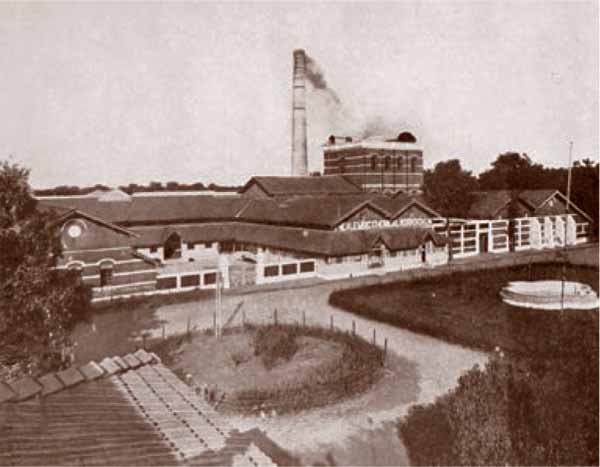
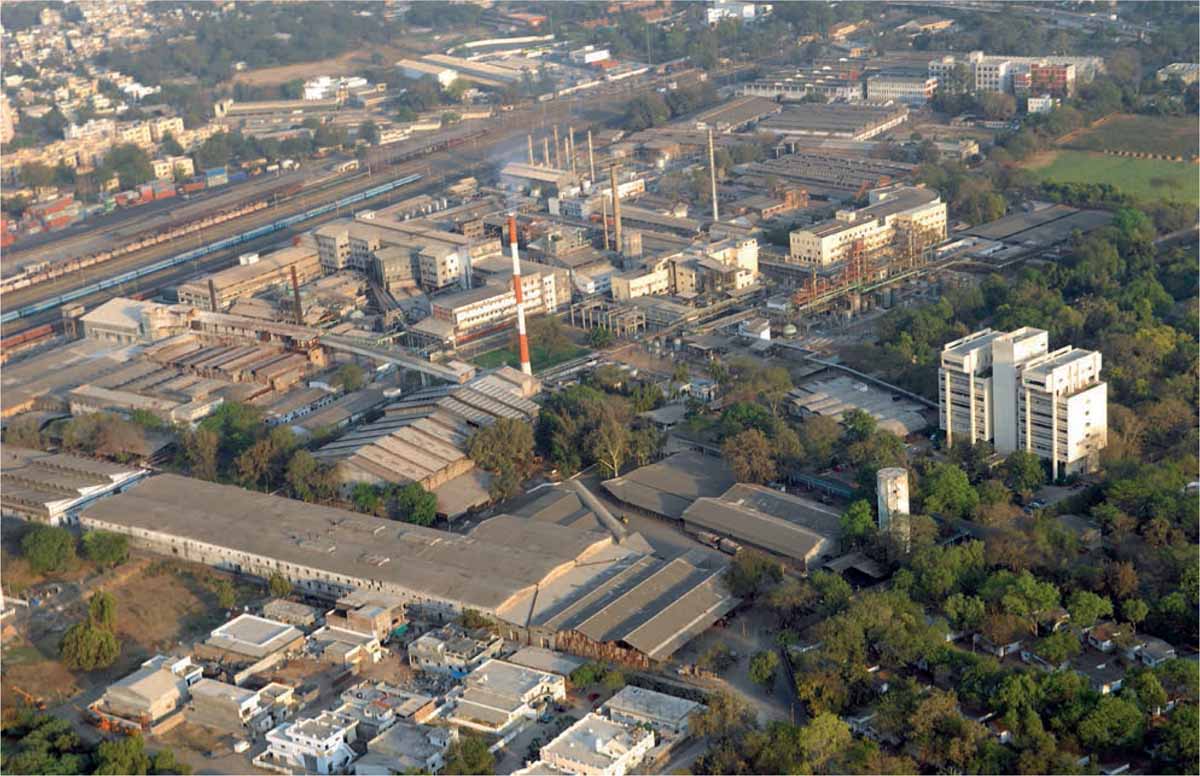
Alembic City has grown into a mixed-use complex, wherein a major part of the eastern side of the plot is used for industrial production. The rest of the site is used for other urban functions and some parts are still empty or relatively under-utilised.
Over the decades, many parts of the site have become green due to the growth of large banyan trees (Vad in Gujarati), which have given the city of Vadodara its name.
Nearly a decade ago, with the increase in the scale of production, Alembic decided that the time had come to move the industrial production out of what in the meantime had become a very central and urban site to a brand new factory outside the city of Vadodara.
In 2016, I was asked to help design a vision for the redevelopment of Alembic City with a view to the impending displacement of the industrial production unit from its original site. This article describes in short how the vision aims to redevelop the new Alembic City, building on the character of the 100-year-old history of the site. Further, it explains how in the multi-polar redevelopment model, which is being used to create the new Alembic City, in the old industrial part, art and culture are being used as generators of the new urban form.
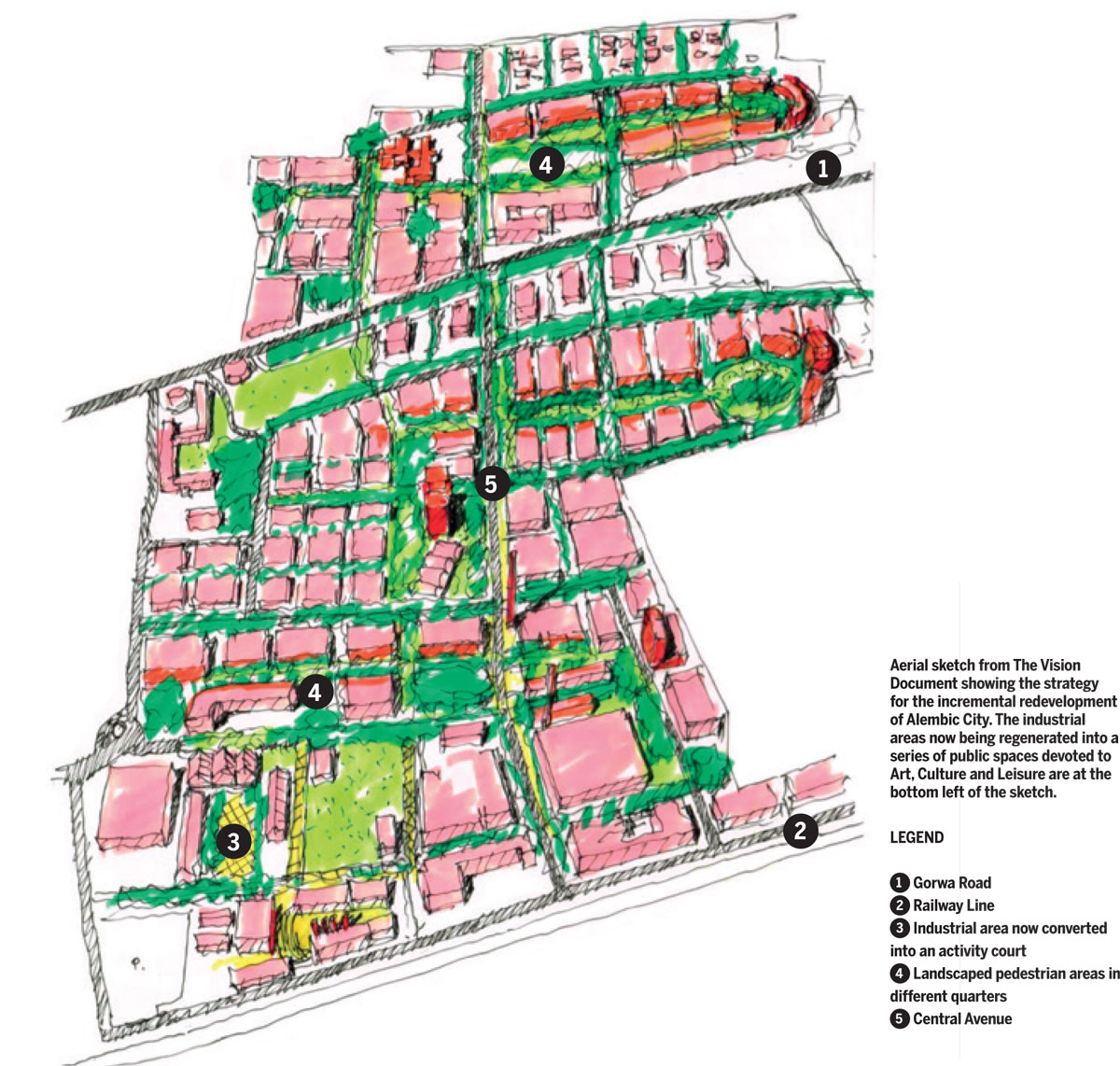
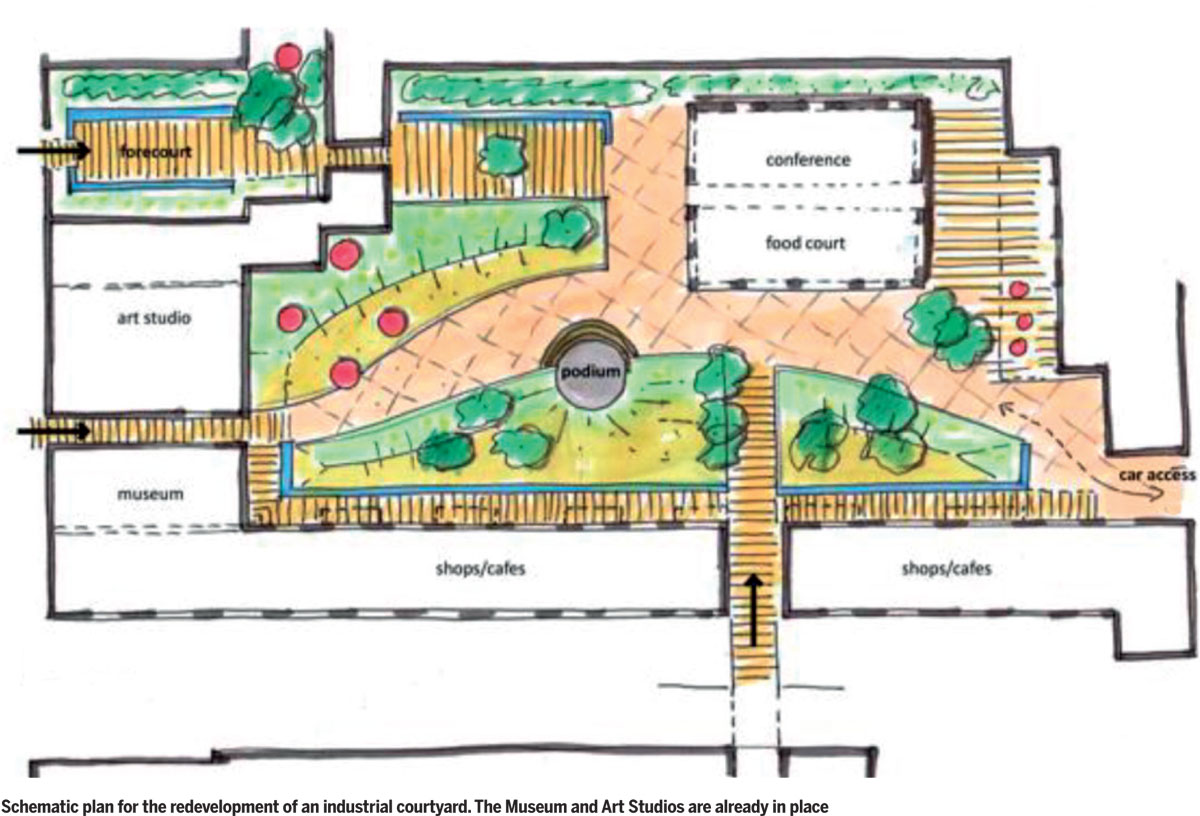
THE VISION FOR REDEVELOPMENT
The redevelopment of the Alembic site is visualised as an incremental process in which this essentially industrial site is slowly converted into a mixed-use urban quarter with residences, offices, research facilities and places for art and culture, leisure and entertainment.
The urban amenities already existing, such as the hospital and the school, are retained as is the central office of Alembic and its research facilities. What creates the space for redevelopment is the relocation of the industrial production facilities and the quarters for the staff working in the industrial units created nearly 50 years ago.
In the vision document, the existing Central Avenue (at right angles to Gorwa Road) is retained but redesigned with broad pedestrian spaces and landscape. New elements of Alembic City are the gently curved axes of movement: from north to south, which connect the areas on the two sides of the Central Avenue.
The existing rich plantation of trees is retained as far as possible, making the new city a great place to live in.
The structure of the new urban quarters is built along a series of landscaped public spaces and parks that give pedestrians very good connectivity throughout new Alembic City. The redevelopment is seen as a multi-nodal and incremental process with, broadly speaking, residential development in the western part, commercial projects and amenities in the central part and culture and art, and leisure and entertainment in the industrial zone in the eastern part of the site.
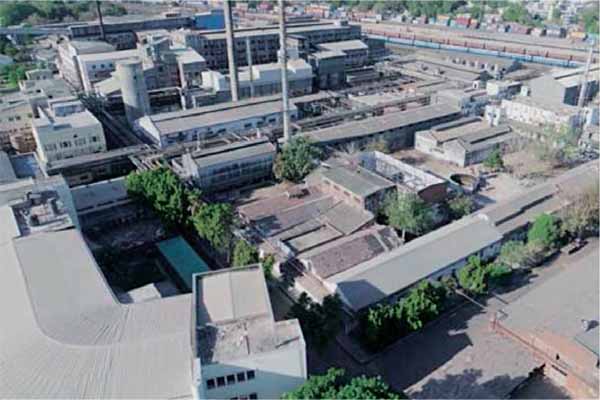
INDUSTRIAL HERITAGE AS INSPIRATION
The eastern part of the site contained hard-core production facilities and had mainly large-scale industrial buildings and artifacts. The atmosphere there is distinctly industrial, being determined by the existence of chimneys and tanks, pipes and industrial artefacts in an urbanscape of large-scale industrial buildings. The redevelopment strategy is based on seeing this industrial heritage as an asset and using the large scale of its original development to create pedestrian precincts for art, culture, leisure and entertainment.
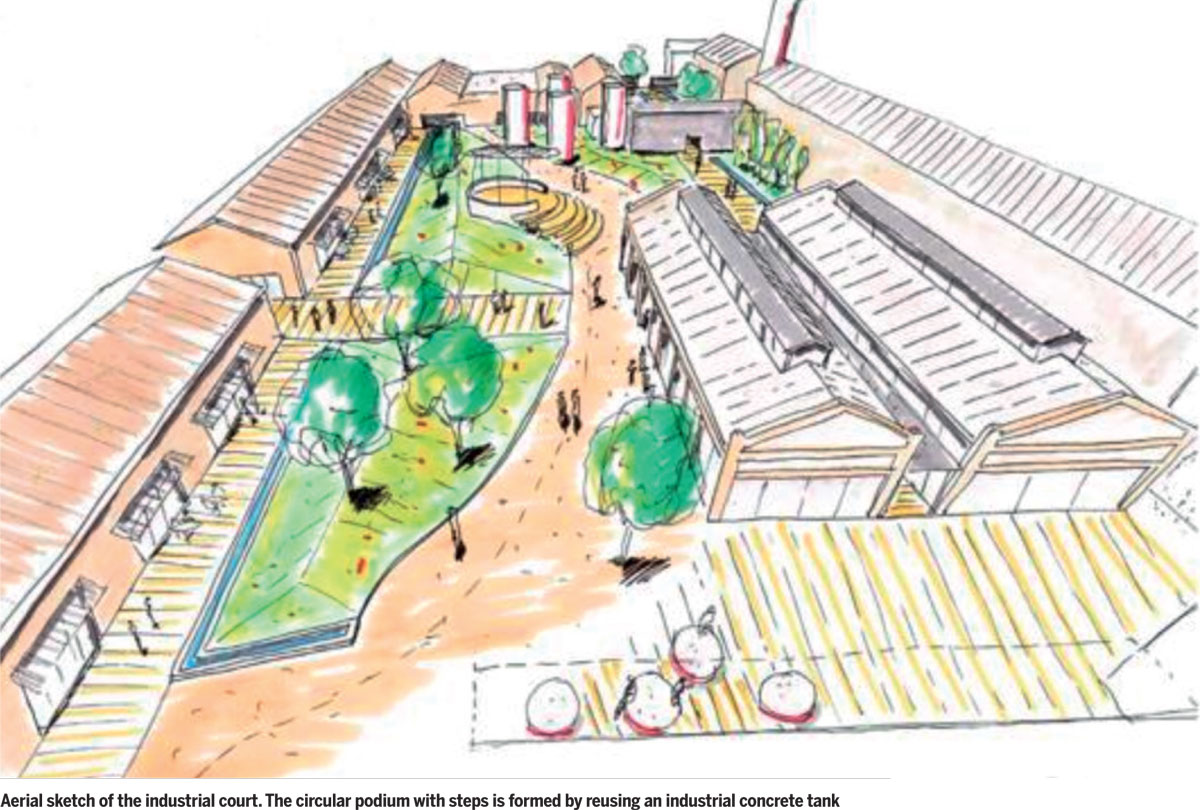
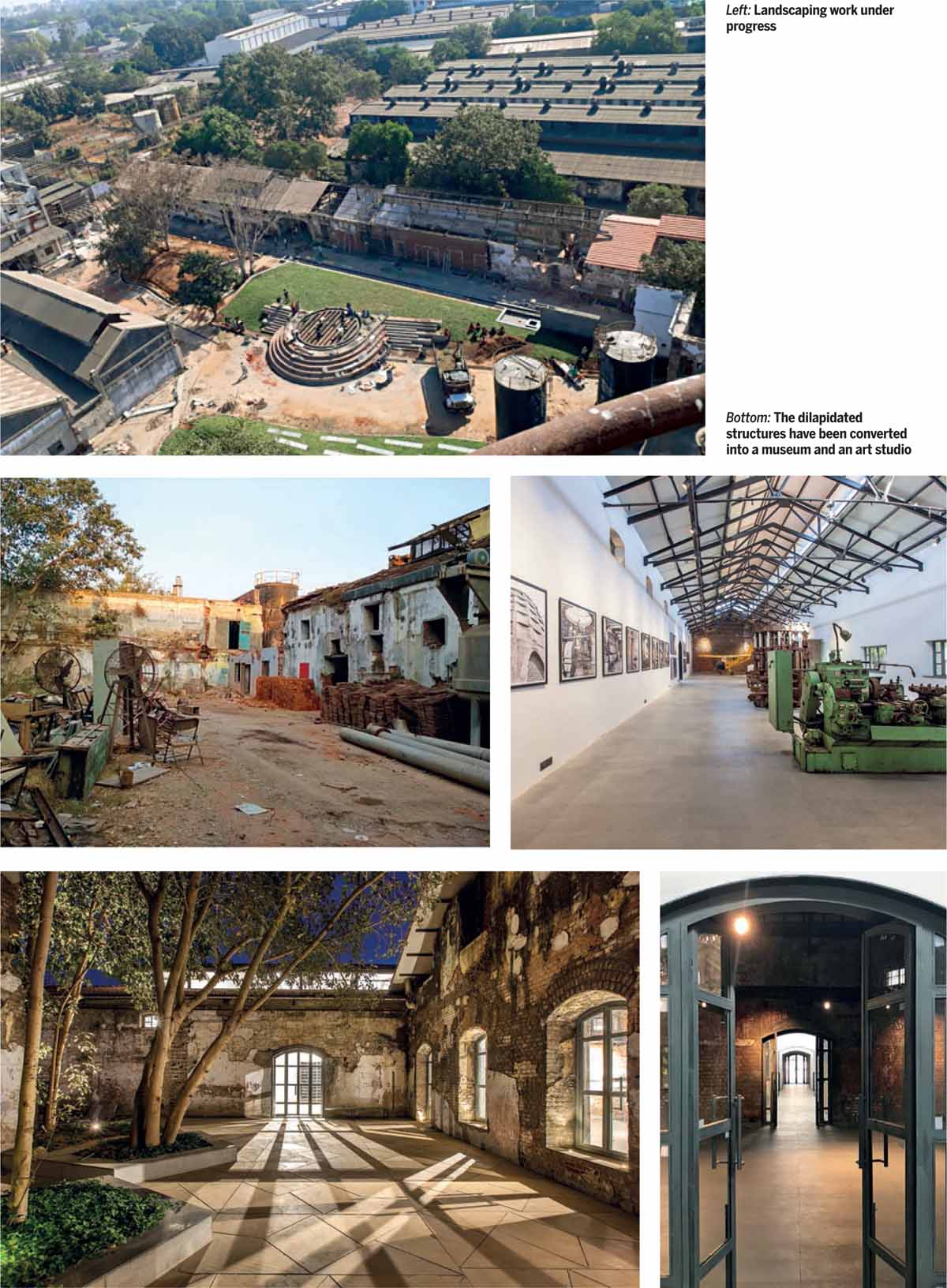
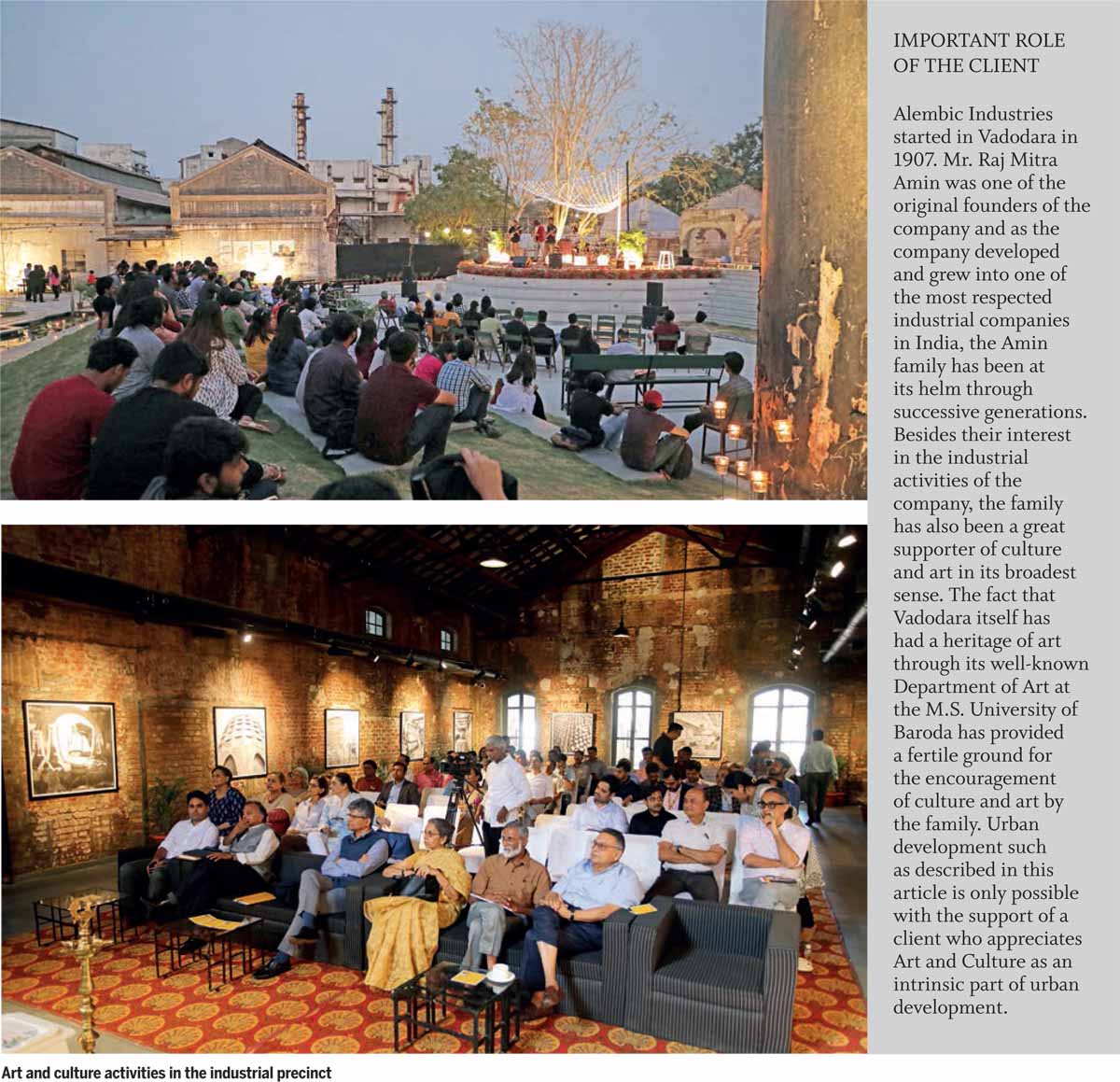
In the first phase of the redevelopment of this eastern node, the more than 100 year old dilapidated and the oldest industrial structure in Alembic City has been converted into a museum and art-studios for young, budding artists. This renovated building forms part of an industrial court and has a podium at its centre to allow for performance of music or other shows. Interestingly, the podium itself has been created by simply capping an old industrial concrete tank that lay unused.
Creative programming has been used in the last year to hold art, music and cultural festivals. Some were held within the renovated buildings and others in the series of open spaces and courtyards.
The initiation of the Industrial Courtyard as a destination for Art and Culture has led to a growing interest among other entrepreneurs of the region to locate their activities around it. In the coming years, this industrial area of historic importance to the city of Vadodara promises to transform itself into a cultural destination.
Acknowledgements:
Urban redevelopment of this magnitude is only possible when the urban designers ICONS/NL could work with and count on the support of the design team of the client Alembic Real Estate and landscape architects Lanarch. Within ICONS/NL’s urban design guidelines the architectural design of separate buildings is being done by different architects such as Karan Grover & Associates and Note D.

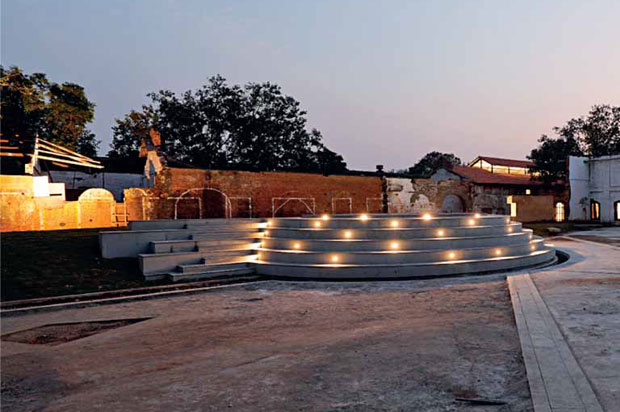

Comments (0)